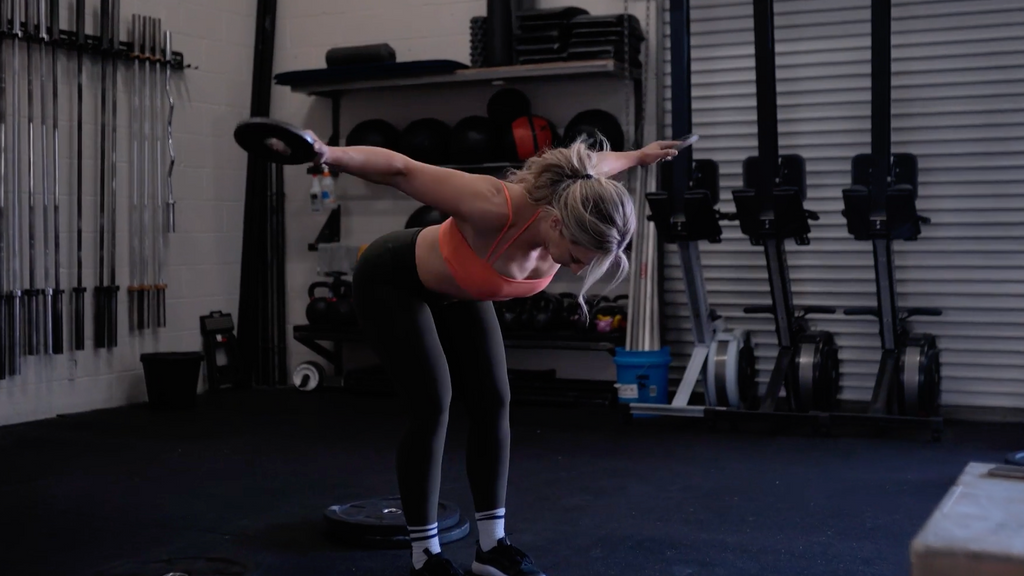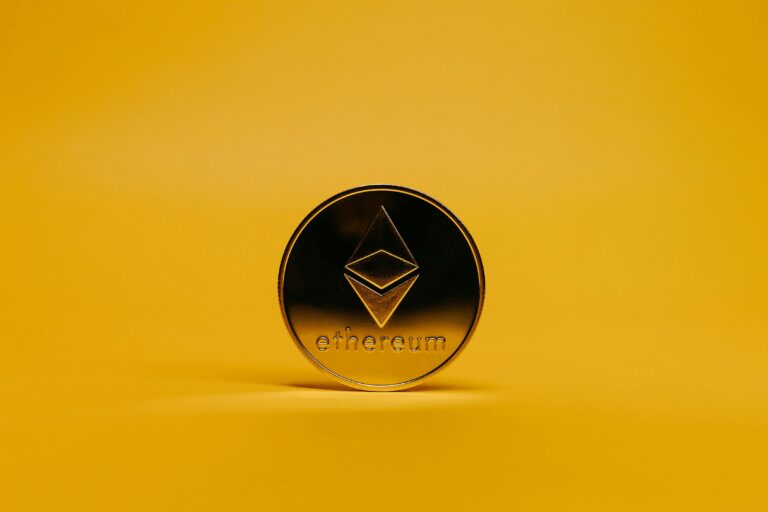
In the ever-evolving world of performance supplements, few natural compounds have generated as much hype in recent years as Turkesterone. Marketed as a powerful, plant-based alternative to anabolic steroids, Turkesterone is part of a unique class of compounds known as ecdysteroids — naturally occurring substances found in insects and certain plants that promote growth, regeneration, and adaptation.
Unlike synthetic anabolic-androgenic steroids such as Anavar or Primobolan, Turkesterone promises muscle-building and strength-enhancing effects without suppressing your natural testosterone levels or requiring post-cycle therapy (PCT).
But does it actually work? And is it worth adding to your supplement stack?
In this article, we’ll break down the top 7 science-backed benefits of Turkesterone — including how it works, how to use it, and whether it truly lives up to the hype for muscle growth, recovery, and strength. Whether you’re a natural lifter looking for an edge or someone cycling off more intense compounds, Turkesterone might be the anabolic support you’ve been missing.
What Is Turkesterone?
Turkesterone is a naturally occurring ecdysteroid, a class of steroid-like compounds found in insects and certain plants. Sourced primarily from the Ajuga turkestanica plant, Turkesterone has gained popularity as a powerful natural anabolic agent that supports muscle growth, strength, and recovery — all without the hormonal risks associated with traditional anabolic steroids.
Ecdysteroids like Turkesterone and its close relative Ecdysterone activate unique cellular pathways that enhance protein synthesis, muscle repair, and performance, but do so without binding to androgen receptors. That means Turkesterone doesn’t suppress your natural testosterone, doesn’t convert to estrogen or DHT, and doesn’t require post-cycle therapy (PCT).
Unlike synthetic compounds like Testosterone Enanthate, which can cause shutdown, liver strain, and side effects, Turkesterone offers a non-hormonal and legal pathway to muscle building. As of 2025, it’s not classified as a banned substance by WADA, making it a viable option for natural athletes and competitors.
How Turkesterone Works
What makes Turkesterone unique is its ability to stimulate anabolic activity in muscle tissue without acting like a traditional steroid. Unlike anabolic-androgenic steroids that bind directly to androgen receptors, Turkesterone operates through an androgen-independent pathway, offering growth potential without hormonal suppression.
The mechanism centers around enhancing muscle protein synthesis by promoting mRNA translation efficiency and ribosomal activity. This results in increased muscle fiber repair, hypertrophy, and adaptation — especially when combined with resistance training.
“Ecdysteroids like Turkesterone can increase protein synthesis in skeletal muscle by upregulating PI3K/Akt signaling and mTOR activity, mimicking the anabolic effects of testosterone without androgenic binding.”
— Isenmann et al., Frontiers in Physiology
Turkesterone is also thought to activate ecdysone receptors, which are more prominent in insects but share analogs in human cells. This mechanism has been shown in animal and in-vitro studies to accelerate lean tissue growth, reduce protein breakdown, and support recovery. Additionally, some research suggests it may influence AMPK signaling, which supports improved body composition by enhancing glucose uptake and fatty acid oxidation.
It’s important to distinguish Turkesterone from other phyto-anabolics like Ecdysterone, which works similarly but has a slightly different structural profile and may exhibit a more pronounced effect on estrogen receptor beta.
Bottom line: Turkesterone promotes growth at the cellular level through anabolic signaling — not hormonal manipulation — making it ideal for those who want steroid-like effects without suppression or side effects.
1. Increased Muscle Protein Synthesis
One of the most promising benefits of Turkesterone is its ability to significantly enhance muscle protein synthesis (MPS) — the biological process responsible for building and repairing muscle tissue after training. This mechanism lies at the heart of hypertrophy and strength adaptation.
Unlike anabolic steroids, which increase protein synthesis through androgen receptor activation and hormonal shifts, Turkesterone promotes MPS through non-hormonal, transcription-based pathways. Specifically, it has been shown to improve mRNA translation efficiency, supporting greater muscle fiber regeneration and growth in response to resistance training.
“Ecdysteroids such as Turkesterone enhance anabolic activity in skeletal muscle cells by stimulating protein synthesis without androgenic side effects.”
— Gorelick-Feldman et al., Biochemical Pharmacology
Additionally, Turkesterone appears to reduce muscle protein breakdown, creating a favorable net protein balance — critical for building lean mass during both bulking and cutting cycles.
Stacking Turkesterone with performance-enhancing supplements like Kre-Alkalyn® Creatine or DHEA may further amplify muscle-building potential by supporting ATP output and natural hormone optimization, respectively.
In short, Turkesterone helps you build more muscle from the same training stimulus, especially when paired with a high-protein diet, progressive overload, and adequate recovery.
2. Enhanced Strength and Power Output
Turkesterone doesn’t just help you build muscle — it may also improve how much force your muscles can produce. Users commonly report increases in strength, especially in compound lifts like squats, bench press, and deadlifts, within the first few weeks of consistent use.
Mechanistically, this benefit is linked to Turkesterone’s ability to enhance contractile protein synthesis and support the development of type II (fast-twitch) muscle fibers, which are critical for explosive strength and maximal power output. By improving recovery and reducing muscle damage, Turkesterone may also allow for greater training volume and frequency, which further drives performance adaptations.
“Ecdysteroids have demonstrated a significant ability to enhance strength and muscle performance without negative hormonal effects.”
— Wilborn et al., Journal of the International Society of Sports Nutrition
Unlike compounds such as Superdrol or Anadrol, which may rapidly increase strength but carry high risks of toxicity and suppression, Turkesterone offers a safer, sustainable alternative that supports performance without hormonal trade-offs.
This makes it a valuable option for athletes, powerlifters, and bodybuilders seeking natural strength progression without relying on synthetic anabolics.
3. Faster Recovery Between Workouts
Recovery is where real progress happens — and Turkesterone may help speed up that process. One of its most widely reported benefits is the reduction in post-workout soreness, fatigue, and inflammation, allowing athletes to train harder and more frequently without overtraining.
This is likely due to its role in improving cellular repair and protein turnover, which accelerates muscle regeneration after intense resistance training. It may also modulate inflammatory cytokines and oxidative stress markers, contributing to faster soft tissue healing and less muscle breakdown during recovery windows.
“Ecdysteroids like Turkesterone have shown promise in promoting skeletal muscle recovery and reducing exercise-induced damage.”
— Syrov et al., Pharmaceutical Chemistry Journal
For those training multiple days per week — especially during high-volume hypertrophy blocks or while stacking with peptides like BPC-157 or TB-500 — faster recovery can lead to significant performance gains over time.
Turkesterone’s support of recovery also makes it a strategic addition during cutting cycles, where maintaining muscle while in a calorie deficit is a constant battle. It allows for consistent intensity in training, even under fatigued or depleted conditions.
4. No Suppression of Natural Testosterone
Unlike anabolic steroids that bind to androgen receptors and disrupt the hypothalamic-pituitary-gonadal (HPG) axis, Turkesterone does not suppress your body’s natural testosterone production. This is one of its most defining advantages — especially for athletes and recreational lifters who want muscle-building results without compromising long-term hormonal health.
Because Turkesterone is non-androgenic, it doesn’t convert to estrogen or dihydrotestosterone (DHT), and it doesn’t signal the brain to shut down endogenous testosterone like Testosterone Enanthate or Trenbolone do.
“Turkesterone demonstrates anabolic activity without altering hormonal balance or affecting the gonadal axis, which differentiates it from traditional steroids.”
— Gorelick-Feldman et al., Biochemical Pharmacology
This means:
-
No testicular shrinkage
-
No post-cycle testosterone crash
-
No need for SERMs like Clomid or Nolvadex
-
No estrogen rebound or risk of gynecomastia
For beginners, natural lifters, or women — especially those hesitant to take synthetic compounds — this safety profile makes Turkesterone a highly attractive tool for lean muscle development without hormonal side effects.
5. Potential Fat Loss and Recomp Support
While Turkesterone isn’t a stimulant or fat burner in the traditional sense, it may still support body recomposition — helping users build lean mass while gradually decreasing fat. This occurs indirectly through its impact on muscle growth, metabolism, and nutrient partitioning.
Because Turkesterone increases muscle protein synthesis and recovery, users are often able to train with greater intensity and frequency. More muscle means a higher resting metabolic rate, which increases total daily energy expenditure (TDEE) — a key driver of fat loss.
Additionally, Turkesterone may influence AMPK signaling, a cellular pathway associated with enhanced glucose uptake, insulin sensitivity, and fatty acid oxidation. These effects are especially valuable during cutting cycles or recomposition phases, where maintaining muscle mass while reducing fat is the ultimate goal.
“Ecdysteroids improve lipid and carbohydrate metabolism, which may contribute to enhanced body composition and improved endurance.”
— Bathori et al., Applied Sciences
Turkesterone may also help blunt muscle loss in a calorie deficit — something compounds like Winstrol or Anavar are often used for, but with added suppression risks. As a non-hormonal tool, Turkesterone offers a safer path to lean gains and metabolic efficiency — ideal for those pursuing visible physique improvements without harsh side effects.
6. Adaptogenic Effects for Stress and Performance
Beyond its anabolic potential, Turkesterone may also act as an adaptogen — a compound that helps the body manage physical and psychological stress. This is particularly relevant for athletes undergoing high-volume training, calorie restriction, or other stress-inducing environments where recovery and resilience are critical.
Sourced from Ajuga turkestanica, a plant traditionally used in Central Asian medicine for vitality and regeneration, Turkesterone is thought to influence cortisol regulation and central nervous system function. This can lead to improvements in mental focus, stress tolerance, and training drive — all key components for long-term performance enhancement.
“Adaptogenic compounds like Turkesterone may help improve physical performance under stress by enhancing mitochondrial function and reducing fatigue markers.”
— Panossian & Wikman, Current Clinical Pharmacology
Many lifters report more stable energy, less burnout, and better mood while supplementing with Turkesterone — especially during challenging phases like competition prep or cutting. Unlike stimulants or harsh pharmaceuticals, its adaptogenic support offers non-jittery, sustainable performance benefits that complement strength and recovery gains.
For athletes who train hard, manage high workloads, or struggle with overreaching, this adaptogenic property makes Turkesterone a smart, well-rounded addition to their stack.
7. Safe, Legal, and Well-Tolerated
Perhaps the most compelling reason behind Turkesterone’s rise in popularity is its excellent safety profile. Unlike traditional anabolic steroids or prohormones, Turkesterone is non-hormonal, non-toxic, and well-tolerated in both men and women — even at higher doses.
There is no evidence that Turkesterone causes:
Because it doesn’t bind to androgen receptors or alter the hypothalamic-pituitary-gonadal (HPG) axis, there’s no need for PCT stacks, and it’s extremely unlikely to cause virilization in women. This makes it a viable option for individuals who want to avoid the risks of compounds like Superdrol or Anadrol.
“Turkesterone has demonstrated a favorable safety margin in both preclinical studies and real-world use, with minimal reported adverse effects.”
— Báthori et al., Applied Sciences
As of 2025, Turkesterone remains legal to purchase and use in the United States and most international markets. It is not listed on the World Anti-Doping Agency (WADA) banned substances list, and is freely available as a dietary supplement — provided it is sourced from a reputable manufacturer with standardized extraction.
For those seeking a risk-averse, results-driven alternative to anabolic steroids, Turkesterone stands out as one of the most promising natural muscle-building compounds available today.
How to Use Turkesterone for Optimal Benefits
Getting the most out of Turkesterone depends on proper dosing, cycle length, and strategic stacking. While it’s a non-hormonal compound, following a consistent protocol is key to maximizing its anabolic potential.
▶️ Dosage
Most users take 500–1,000 mg per day, often split into two doses (morning and pre-workout) to maintain consistent plasma levels. Higher doses are generally well-tolerated, but exceeding 1,000 mg may offer diminishing returns without added benefit.
▶️ Cycle Length
A standard Turkesterone cycle lasts 8 to 12 weeks, followed by a 2–4 week break. Because it doesn’t suppress testosterone, you don’t need a traditional PCT. However, cycling off periodically helps assess natural progress and maintain long-term sensitivity.
▶️ Stacking Recommendations
For best results, Turkesterone can be stacked with synergistic supplements such as:
-
Kre-Alkalyn® Creatine: to boost strength and ATP regeneration
-
DHEA: for natural hormonal support, especially in men over 30
-
BPC-157 or TB-500: to amplify joint and muscle recovery
-
Ecdysterone: for a natural stack with complementary anabolic pathways
▶️ When to Take It
Turkesterone is most effective when combined with a progressive resistance training program, adequate protein intake, and consistent recovery habits. While it won’t replace training or diet, it can accelerate results for lifters focused on strength, hypertrophy, or recomp.
Are the Benefits Backed by Science?
Turkesterone’s muscle-building potential is supported by a growing body of preclinical and in-vitro research, along with a strong wave of anecdotal reports from athletes and bodybuilders. While large-scale human clinical trials are still limited, the data that exists is promising — especially when viewed alongside the research on similar compounds like Ecdysterone.
Studies on ecdysteroids — the broader class Turkesterone belongs to — show improvements in:
→ Muscle hypertrophy
→ Protein synthesis rates
→ Physical performance and work capacity
→ Nitrogen retention and recovery
“Ecdysteroids produced an anabolic effect on muscle mass comparable to some synthetic anabolic steroids, but without the androgenic or hepatotoxic effects.”
— Isenmann et al., Frontiers in Physiology
Still, Turkesterone-specific human trials are sparse. Most of the available data comes from rodent models, cell culture studies, and indirect evidence based on its chemical similarity to other ecdysteroids. The lack of suppression and positive safety profile has further boosted real-world adoption.
While it may not deliver the rapid size increases of compounds like Anadrol or Dianabol, Turkesterone offers measurable, sustainable progress with far fewer risks — making it one of the most exciting natural muscle enhancers currently available.
Legal Status and Disclaimer
As of 2025, Turkesterone is fully legal to purchase, possess, and use in the United States, Canada, the United Kingdom, Australia, and most countries throughout Europe. It is sold as a dietary supplement and is not classified as a controlled substance under the U.S. DEA, Health Canada, or similar international regulatory bodies.
→ Not banned by WADA: Turkesterone is currently not on the World Anti-Doping Agency (WADA) Prohibited List, making it a legal option for tested athletes. However, regulations can evolve, so it’s important to check with your specific federation before using any performance-enhancing compound.
→ No prescription required: Because Turkesterone is plant-derived and non-hormonal, it is not considered a pharmaceutical drug and does not require a doctor’s prescription for purchase or use.
→ Product quality matters: Due to its popularity, many Turkesterone supplements on the market are underdosed or impure. Always choose brands that use standardized extracts (e.g., 10% Turkesterone from Ajuga turkestanica) and conduct third-party testing for quality assurance.
Disclaimer: This content is for informational and educational purposes only and does not constitute medical advice. Always consult a licensed healthcare provider before starting any new supplement, especially if you have a medical condition or are taking prescription medications.
Turkesterone’s legal status and natural classification make it a standout option for individuals looking to support muscle growth and performance — without the risks, stigma, or legal complications of synthetic anabolic steroids.
Conclusion: Should You Try Turkesterone?
Turkesterone offers a unique blend of anabolic potential, recovery support, and safety that sets it apart from both synthetic steroids and underwhelming natural alternatives. Backed by promising research and strong anecdotal results, it supports:
→ Increased muscle protein synthesis
→ Improved strength and workout performance
→ Faster recovery between training sessions
→ Lean muscle gain without testosterone suppression
→ Legal, non-toxic use with no need for PCT
For beginners, natural lifters, women, and anyone looking to enhance performance without hormonal disruption, Turkesterone provides a compelling option. While it won’t produce the dramatic mass gains seen with compounds like Trenbolone or Winstrol, it can help you train harder, recover faster, and build lean mass naturally — with far less risk.
Ultimately, Turkesterone represents a new frontier in natural performance enhancement. When combined with smart training, proper nutrition, and recovery protocols, it has the potential to take your results to the next level — without compromising your health or hormones.
FAQ: Turkesterone
→ Is Turkesterone a steroid?
No — Turkesterone is not a synthetic anabolic steroid. It is a plant-based ecdysteroid derived from Ajuga turkestanica. While it shares some anabolic effects with traditional steroids, it does not bind to androgen receptors, does not suppress testosterone, and is not classified as a controlled substance.
→ Does Turkesterone require post-cycle therapy (PCT)?
No. Since Turkesterone is non-hormonal and does not suppress the HPG axis, it does not require PCT. Unlike compounds such as Testosterone Cypionate or Dianabol, you won’t experience shutdown or hormonal rebound when discontinuing use.
→ Can women use Turkesterone?
Yes — Turkesterone is well-tolerated in women and presents no risk of virilization (deepening of the voice, hair growth, etc.) because it does not increase androgen levels. It can be a great natural alternative for women seeking lean muscle development without turning to harsh anabolic steroids. For more, see our guide to safe steroid use for women.
→ How long should you cycle Turkesterone?
A typical Turkesterone cycle runs 8–12 weeks, followed by a 2–4 week break. Cycling is not mandatory, but breaks allow users to evaluate baseline performance and ensure continued sensitivity to the compound.
→ Is Turkesterone legal in sports?
Yes — as of July 2025, Turkesterone is not on the WADA banned list and is permitted in most sports federations. However, athletes should always verify with their governing body, as rules can change.
→ What’s the difference between Turkesterone and Ecdysterone?
Both are ecdysteroids, but Turkesterone is thought to be more bioavailable and potentially more anabolic due to its structural differences. Many users stack the two for complementary benefits. Learn more in our guide to Ecdysterone.






